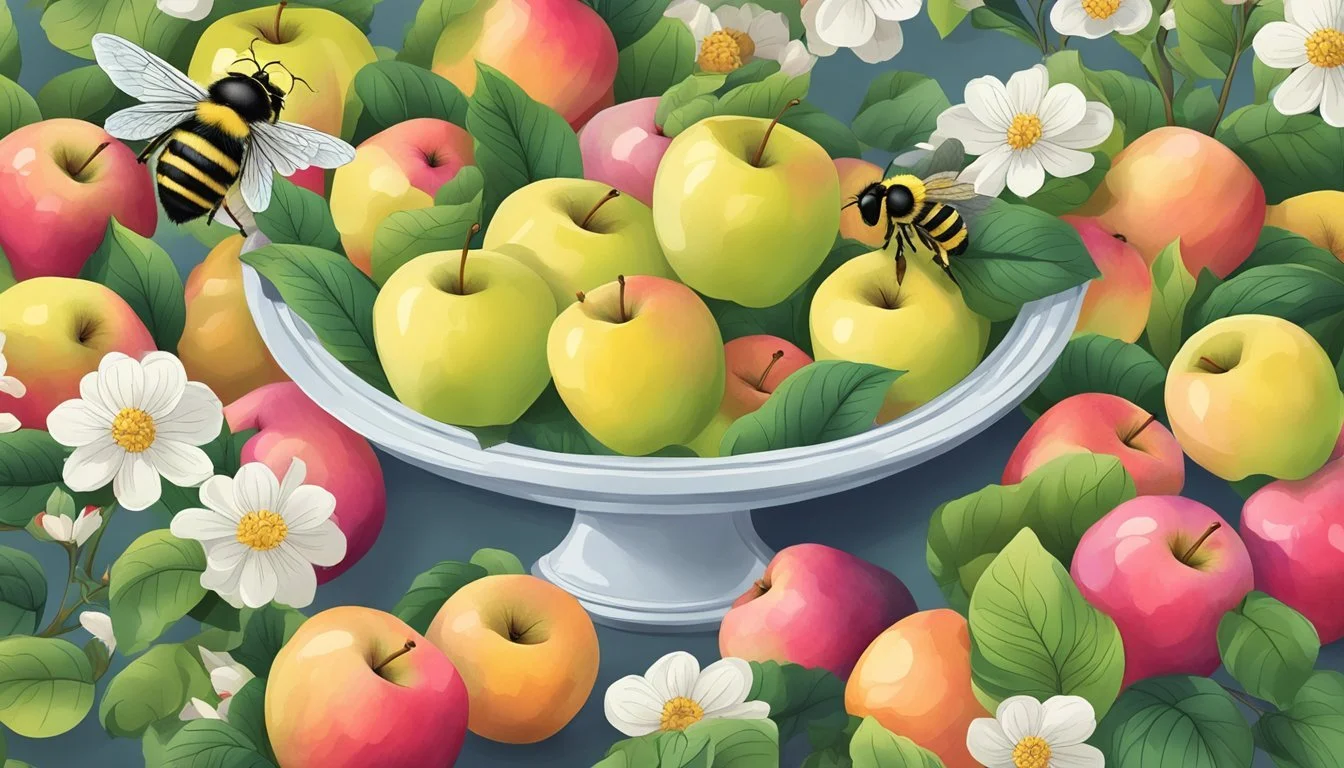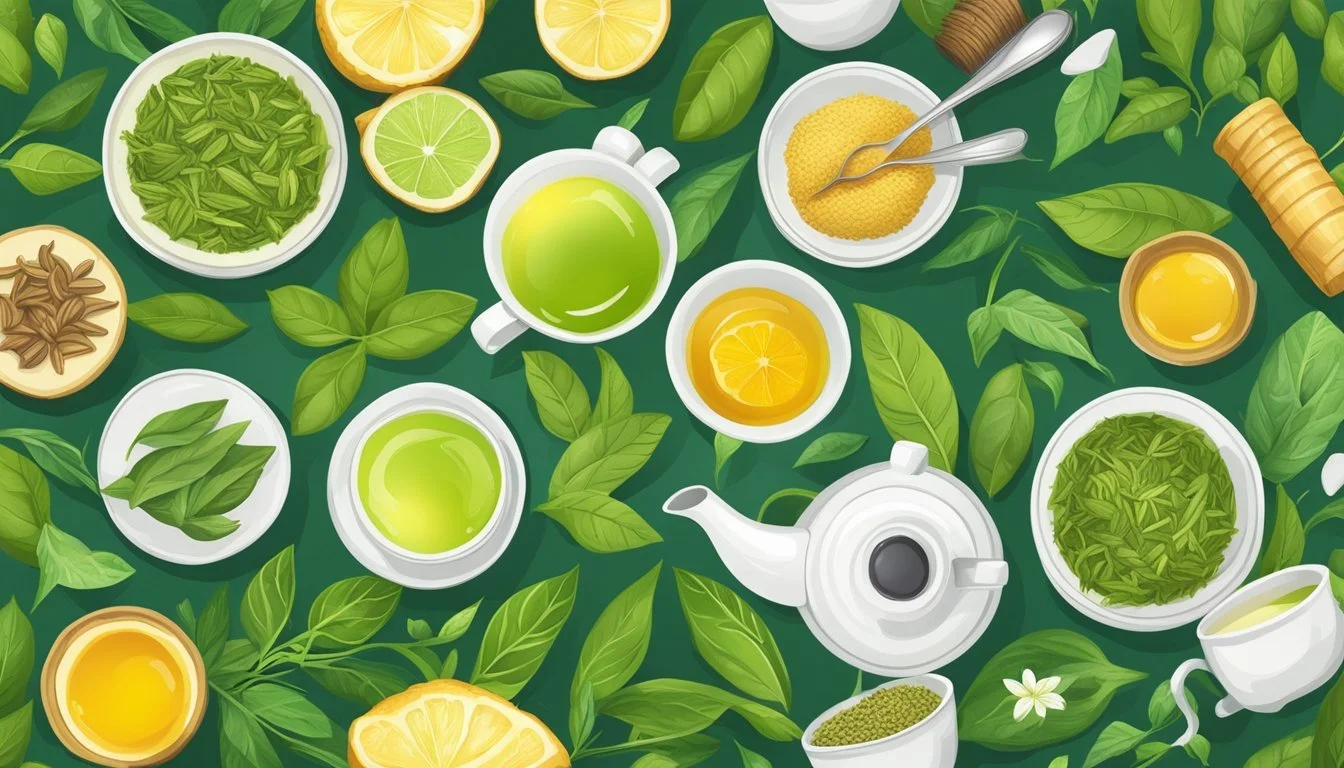15 Natural Antihistamine Foods to Combat Allergies
Top Choices to Reduce Allergic Reactions
Histamine plays a crucial role in the body's immune response, but for some individuals, high levels can lead to uncomfortable symptoms. Understanding the role of antihistamine foods can be essential for those managing histamine intolerance or allergic reactions. Antihistamine foods can help mitigate these symptoms by reducing the body's production of histamine or blocking its effects.
Choosing foods that are naturally low in histamines or possess antihistamine properties can be a proactive way to manage health and well-being. These dietary choices can provide benefits for those looking to reduce their overall histamine load and improve their quality of life.
1) Quercetin-rich apples
Apples, especially the red varieties, are a significant source of quercetin. Quercetin is a beneficial flavonoid that has anti-inflammatory and antioxidant properties. Red apples are among the top quercetin-rich fruits.
Eating red apples can contribute to managing histamine intolerance. The quercetin content in these apples helps reduce histamine release and stabilizes mast cells, which play a role in allergic reactions.
In addition to their quercetin content, red apples provide dietary fiber. This fiber supports digestive health and can help in maintaining a healthy gut, which is crucial for overall well-being.
Furthermore, red apples offer additional benefits, including the reduction of blood pressure and cholesterol levels. Regular consumption of red apples has been linked to a lower risk of heart disease and improved cognitive function.
Incorporating apples into the diet is simple and versatile. They can be eaten fresh, added to salads, or included in various recipes. Red apples particularly are an easy and delicious way to increase quercetin intake.
2) Flavonoid-packed onions
Onions are an excellent source of flavonoids, primarily quercetin. This powerful antioxidant has anti-inflammatory and antihistamine properties.
Quercetin in onions helps inhibit the release of histamine from cells, reducing allergy symptoms. Onions can thus be beneficial for those with histamine intolerance.
Incorporating onions into meals is easy. They can be eaten raw, cooked, or added to salads, soups, and stews. By regularly including onions in their diet, individuals can harness these antihistamine benefits.
3) Vitamin C-loaded Oranges
Oranges are a well-known source of Vitamin C, an essential nutrient known for its antihistamine properties. Vitamin C helps the body to reduce histamine levels and can alleviate symptoms associated with histamine intolerance.
The high Vitamin C content in oranges boosts the immune system by supporting the production of white blood cells. This can result in better protection against common ailments.
Besides their immune-boosting capabilities, oranges are also rich in antioxidants, which help to reduce inflammation in the body. They provide a natural way to manage histamine levels effectively. These properties make Vitamin C-loaded oranges a practical choice for those seeking to manage histamine intolerance through diet.
Incorporating oranges into meals or as a snack can be an easy and delicious way to increase Vitamin C intake. Options include fresh orange juice, orange slices, or adding pieces of orange to salads.
4) Bromelain-rich pineapples
Bromelain, an enzyme found in pineapples, has garnered attention for its potential health benefits.
Pineapples are a rich source of this enzyme, which has anti-inflammatory properties. This can be particularly useful for individuals managing allergic reactions since inflammation often accompanies histamine release.
Though bromelain can help break down inflammation, pineapples themselves are known to have high histamine levels.
For those dealing with histamine intolerance, it may be advisable to consume bromelain as a supplement rather than eating pineapple directly.
In addition to bromelain, pineapples provide essential nutrients like vitamin C and manganese. These vitamins and minerals support overall health, contributing to the fruit's nutritional value.
Incorporating bromelain supplements might offer the benefits without triggering histamine-related issues, ensuring people with sensitivities can still access its anti-inflammatory properties.
5) Antioxidant blueberries
Blueberries are widely recognized for their high antioxidant content, especially their rich supply of anthocyanins. Anthocyanins are compounds that not only give blueberries their vibrant color but also exhibit strong anti-inflammatory and antioxidant properties.
Blueberries are low in histamine, making them suitable for individuals managing histamine intolerance. This characteristic adds to their appeal as a naturally antihistamine food.
Research links regular, moderate intake of blueberries with health benefits like reduced cardiovascular disease risk, type 2 diabetes, and improved weight maintenance. These benefits can be attributed to the high antioxidant capacity of blueberries and their abundant polyphenolic compounds.
Incorporating blueberries into the diet can thus support immune health while also delivering a delicious and nutritious boost.
6) Green tea
Green tea is known for its beneficial properties, including its role as a natural antihistamine.
This tea contains polyphenols, which have been shown to block histamine release from mast cells. Drinking green tea can help stabilize these cells, reducing the symptoms of histamine intolerance.
Green tea also possesses anti-inflammatory effects. These properties are advantageous for those with histamine intolerance.
Moreover, green tea’s antioxidant content contributes to its health benefits. These antioxidants aid in combating oxidative stress, which can further support immune function.
When choosing green tea, it's beneficial to opt for high-quality, organic options for the best results.
Green tea can be enjoyed both hot and cold, making it a versatile choice for any season.
7) Parsley
Parsley is a well-known herb frequently used as a garnish, but it offers significant antihistamine properties.
Rich in vitamins A, C, and K, parsley can mitigate allergic reactions. It contains quercetin, a natural compound that stabilizes the release of histamines from immune cells. This can help reduce symptoms like itching, swelling, and hives.
Parsley also exhibits anti-inflammatory effects. These properties make it beneficial for those seeking to manage allergic symptoms through dietary means. The herb can be easily incorporated into various dishes, enhancing both flavor and nutrition.
Besides its antihistamine benefits, parsley supports overall digestive health. It can repair damage to the mucosal lining of the stomach and is known to aid in liver detoxification. Including parsley in daily meals can be an effective strategy for those with histamine intolerance.
8) Turmeric
Turmeric, a vibrant yellow spice, is well-regarded for its anti-inflammatory properties. It has been used in traditional medicine for centuries. Turmeric is derived from the root of Curcuma longa and contains the active compound curcumin.
Curcumin is a natural antihistamine and can help in reducing histamine levels. This compound also has antioxidant and anti-inflammatory effects. These properties make turmeric a beneficial addition to a diet aimed at lowering histamine.
Despite its benefits, turmeric should be used in moderation by individuals with histamine intolerance. Some reports suggest it may act as a histamine liberator in certain sensitive individuals. Therefore, it's essential to monitor personal reactions when incorporating it into the diet.
Turmeric can be used in various forms such as fresh root, powdered spice, or supplements. Adding it to meals like curries, soups, or teas can enhance flavor and boost health benefits. It can also be paired with black pepper to increase the absorption of curcumin.
For those with histamine intolerance, consulting a healthcare provider before making significant dietary changes is advisable.
9) Ginger
Ginger has a well-earned reputation as a potent natural antihistamine. It doesn't contain high levels of histamine, making it suitable for those with histamine intolerance. Research indicates that ginger possesses significant antioxidant and anti-inflammatory properties, which can help manage symptoms related to histamine intolerance effectively.
In addition to its antihistamine capability, ginger can help combat nausea and motion sickness commonly induced by histamine. It can be easily added to teas, soups, or even consumed raw, providing a versatile option for incorporating into daily diets.
Its multifaceted benefits extend beyond antihistamine properties, as it also supports the immune system. Whether used fresh, dried, or in supplement form, ginger remains a reliable and natural option for those seeking to manage histamine levels.
The simplicity of using ginger makes it accessible. Just shaving off a small piece and steeping it in hot water can create a soothing drink. This not only serves as a histamine blocker but also adds a flavorful component to health routines.
10) Garlic
Garlic contains allicin, a sulfur compound known for its health benefits. Allicin has antimicrobial and anti-inflammatory properties, which contribute to garlic's antihistamine effects.
Garlic is not inherently high in histamine, making it a safe choice for individuals managing histamine levels. This compound also plays a role in reducing allergic reactions.
Incorporating fresh garlic into meals can enhance flavor while providing potential antihistamine benefits. Its natural properties make it a valuable addition to a low-histamine diet.
Understanding Antihistamines
Antihistamines play a crucial role in managing allergic reactions. They can be found in both synthetic and natural forms, offering various options for those seeking relief.
Role of Antihistamines in the Body
Antihistamines mitigate the effects of histamines, which are chemicals released during allergic reactions.
Histamines bind to receptor sites in the body, causing symptoms like itching, sneezing, and swelling. By blocking these receptor sites, antihistamines prevent or reduce these allergic symptoms. They are particularly effective in treating conditions such as hay fever, hives, and even some instances of asthma.
Antihistamines also possess anti-inflammatory properties, assisting in reducing redness and irritation. The efficacy of these substances makes them a cornerstone in allergy treatment.
Natural vs. Synthetic Antihistamines
Natural antihistamines are found in various foods and plants. For example, sweet potatoes are highly nutritious and contain compounds that help stop the histamine response in cells.
Synthetic antihistamines, on the other hand, are manufactured pharmaceuticals like cetirizine and loratadine. These are often more potent and can provide rapid relief from intense allergic reactions.
While natural options may be gentler on the body, synthetic antihistamines offer precise dosing and consistent results. Each type has its benefits, and the choice between them can depend on individual needs and the severity of allergic symptoms.
Benefits of Food High in Antihistamine
Consuming foods high in antihistamine can significantly help in managing allergy symptoms and improving respiratory health. These foods often contain natural compounds like quercetin that block histamine release, providing relief from common allergy symptoms.
Reduction of Allergy Symptoms
Eating antihistamine-rich foods can alleviate symptoms such as itchy skin, runny nose, and watery eyes. Compounds like quercetin, found in apples and onions, help stabilize immune cells, preventing them from releasing histamines that cause allergic reactions.
Incorporating leafy greens like kale and arugula can also reduce the frequency and severity of symptoms. These greens offer essential vitamins and minerals that support the immune system.
Natural antihistamines can be particularly beneficial for individuals with histamine intolerance. By replacing high-histamine foods with low-histamine options, one can manage symptoms more effectively.
Improved Respiratory Health
Antihistamine foods are valuable for enhancing respiratory health by reducing inflammation and irritation in the airway. Sweet potatoes, rich in vitamins and antioxidants, mitigate the histamine response, reducing bronchoconstriction and mucus production.
Broccoli sprouts are another excellent choice. They contain sulforaphane, a compound that reduces oxidative stress in the respiratory system.
Including these foods in the diet can lead to more comfortable breathing and fewer asthma symptoms. Healthy respiratory function is crucial for overall well-being, especially for those with chronic respiratory conditions.
Potential Side Effects and Considerations
While foods high in antihistamines can offer relief from allergy symptoms, it's important to be aware of potential side effects and interaction risks. These vary depending on individual health conditions and medications being taken.
Possible Allergic Reactions
Individuals may experience allergic reactions to antihistamine-rich foods. Symptoms can include itching, swelling, and digestive issues. Foods such as citrus fruits, berries, and certain herbs might trigger these reactions.
People with sensitive immune systems should introduce these foods gradually. Monitoring for any adverse reactions is crucial. An allergy test may help identify specific triggers. In severe cases, anaphylaxis could occur, requiring immediate medical attention.
Interactions with Medications
Certain foods high in antihistamines can interact with medications. These interactions can reduce the effectiveness of either the food or the medication. It is critical to consult a healthcare provider before adding high-antihistamine foods to the diet if on medications for allergies, heart conditions, or other chronic illnesses.
For instance, foods rich in Vitamin C can interfere with some chemotherapy drugs and cholesterol medications. A healthcare provider can provide personalized advice tailored to specific medical conditions and medication regimens. Monitoring for side effects when combining these foods with medications ensures safety and efficacy.











